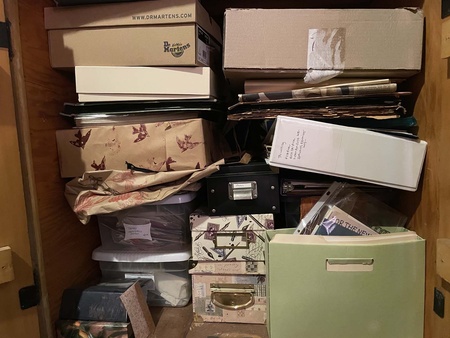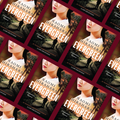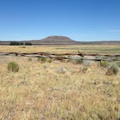My mom tells me that when my oldest Nisei auntie died in 2016, there were so many boxes in the shed next to her house. Fruit crates, to be exact. Corrugated white cardboard, insulated. Interlocking flaps on the top—enough to let the air circulate over and around the Bartlett pears, Concord grapes, freestone peaches. Some release and some relief, a pleasure to close the boxes as the flaps locked into place, a slight struggle to open. What we hoarders recognize as a Really Good Box.
The boxes my auntie left behind, though, were empty. So many empty boxes, and I wonder about these. I think they were remnants of her years working at the fruit packing shed in Loomis, California, just a block or two from her house. You never know when you will need to put your life into boxes again, to pack it up, crate it up, send it somewhere else for parts unknown, “for the duration of the war.” I have to wonder now if that’s why she kept the boxes, empty and dusty as they remained.
Like any good hoarder, I have my own archives—although they’re mostly restricted to one large cupboard in my basement, at least. The cupboard is threatening to burst, and I have to keep nudging the door shut, hoping that it will stay closed. I have my own Really Good Boxes, my own shoe boxes and sturdy brown boxes that also close in a satisfying way.
I come by this physical legacy honestly, like many good hoarders.
Immigrant Japanese grandparents who had to make use of everything during the Depression and then in camp during the war. Mottainai: Don’t waste anything, you might need it later. In camp my grandfather punctured holes in a coffee can in order to create a portable watering can for the vegetables and flowers he managed to grow in the desert.
My immigrant Filipina grandmother had a whole wall in her garage devoted to home-canned peaches and pears and two refrigerators full of food. My parents grew up with these parents, knowing partly through experience and partly through instinct a persistent, insistent hum to keep, to keep, to keep.
Even so, when my dad and his family were packing all of their belongings for discarding or taking for camp—the taking was a small pile—-my grandfather Junichi was still shaking his head in disgust. “Nimuras are pack rats,” he said.
Oh, I know about some of the dangers of hoarding too. There is the danger of overwhelm, where the physical objects overtake a space and just to look at the pile of objects makes the forehead tighten. Like museum curators and cultural anthropologists, we hoarders know that objects have great power to speak.
The intricately folded notes on college ruled paper that my friends and I would slip into each others’ lockers during high school. The card that my youngest daughter made me when she was six. Photos and concert programs, ticket stubs from plays. The handwritten thank-you card that one of my students wrote to me after a difficult semester. The piles upon piles that then become a series of tasks, until the tasks also feel like too much.
There is absolutely a pleasure in the hoarding: the secretiveness of it, the physicality of it. Building a wall of security around yourself, with objects. One of the dangers, though, is mistaking the physicality for a fuller sense of self, a fuller sense of life. And of course, there’s the danger of compartmentalization that we have, and the stories we tell ourselves about our piles of stuff. We build these literal and symbolic walls around these painful objects and we think, It’s there, it’s safe, I don’t have to open it again, or revisit it.
There are visceral instincts that hoarding satisfies. Hoarders hear certain rhythms constantly, as persistent and undercurrent as the noise of a refrigerator, or an electric fan in the summer, so that we’re able to tune them out at a certain everyday working level.
Each decluttering, then, comes with a sense of excavation and often a thrill of (re)discovery. And a sense of dread—must I let this go again?—and shame—I can’t believe I kept this for so long.
I’ve thought a lot through several moves (distress-inducing for any hoarder) and I wonder if the problem for me is a couple of things.
The first is about mistaking a physical possession for a psychological possession. I wonder if I mistake the keeping for a form of memory; if I keep it physically, I have a tangible object that represents the memory. But then I don’t complete the cycle: I don’t look back at the object or the memory again. Keeping then becomes a form of memory, and a form of avoidance.
The second is about the need for curation. Perhaps (the hoarder in me pleads) it’s not the keeping that’s so bad? Perhaps (the Marie Kondo convert in me intones) it’s the need to curate. Curation, what Kondo describes as “tidying up”—much-maligned by many folks who did not read her book. Curation as looking back, but also a way to integrate the memory the object represents into the self.
Curation helps to inventory, to know that the fifty ballpoint pens might not all be necessary, and might be grouped together. But to provide context for the objects. Curation for the hoarder provides an integration of identity, stories, meaning—it helps to reconnect objects with their meaning. The most valuable rare photographs mean very little without context: who took it, how they took it, when they took it, why they took it.
Context, historicizing, provenance— all of these are a form of swaddling for each object. A sense of care for each object, each object with a sense of purpose. Having been unemployed for a time after over a decade of intensely mentally grinding work in academia, first in grad school and then as a teacher, I understand the helplessness, the shame, in not seeming to have a visible outward purpose. Maybe, as Kondo and her students insist, it’s the least we can do for the objects we live with in our homes.
Like the characters in Ruth Ozeki’s most recent novel, The Book of Form and Emptiness, we hoarders know that the voices that the objects have are also at some level our own. We are always practicing a form of alchemy which looks something like this:
We fight I lost, I lost, I lost with its antidote, I have, I have, I have.
And then we double down on the possession:
I keep, I keep, I keep.
And then one more layer for good measure, because what else are hoarders good at, if not layering?
I keep, I keep, I keep becomes I bury, I bury, I bury.
© 2023 Tamiko Nimura






